Havana 10
Tribute to Cuban mothers

Tribute to Cuban mothers from Pabexpo + Photos
This Friday the Art Fair for Mom, which is open until May 13, extends to all provinces of the country.
A CubaNews translation. Edited by Walter Lippmann.

At 11 a.m. on Friday, April 26, 2019, the National Crafts Fair dedicated to mothers was inaugurated at Pabexpo. Author: Maykel Espinosa Rodríguez Published: 26/04/2019 | 03:11 pm
More than 200 artists are present at the XIV edition of the Art Fair for Mom, sponsored by the Fondo de Bienes Culturales, which takes place every year in the Cuban capital and other provinces of the country, prior to the celebration of Mother’s Day.
This Friday was officially inaugurated at the Pabexpo exhibition center, the event, which this time also pays tribute to the 500th anniversary of the foundation of the village of San Cristóbal de La Habana.
Mercy Correa Piñero, director of FCBC’s National Crafts Center, emphasized in her words of welcome to guests, journalists, and the general public, the significance of the national scope of this 14th edition of Arte para Mamá, the second to reach all the Fund’s affiliates in the country, published by ACN.
Outstanding Cuban singer Annie Garcés and her group animated the event with the interpretation of well-known themes such as Mauricio Figueiral’s conga Agua; Todo natural, by Adrián Berazaín; and Tú me amas, by Andy Villalón.
In around 600 exhibition spaces, visitors can find artistic and cultural promotions from all over the country, including crafts, textiles, ceramics, handcrafted furniture, footwear, goldsmith’s pieces, Arte en Casa products and different works of art and literature.
Representing the Cuban cultural industry are the Empresa de Grabaciones y Ediciones Musicales (EGREM), the Distribuidora Nacional del Libro, Génesis Galería and the Instituto Cubano de Arte e Industria Cinematográfica (ICAIC).
The fair will be open every day until Saturday, May 11, from 10:00 a.m. to 7:00 p.m., except Wednesday, May 1, in rooms B and C of the venue.
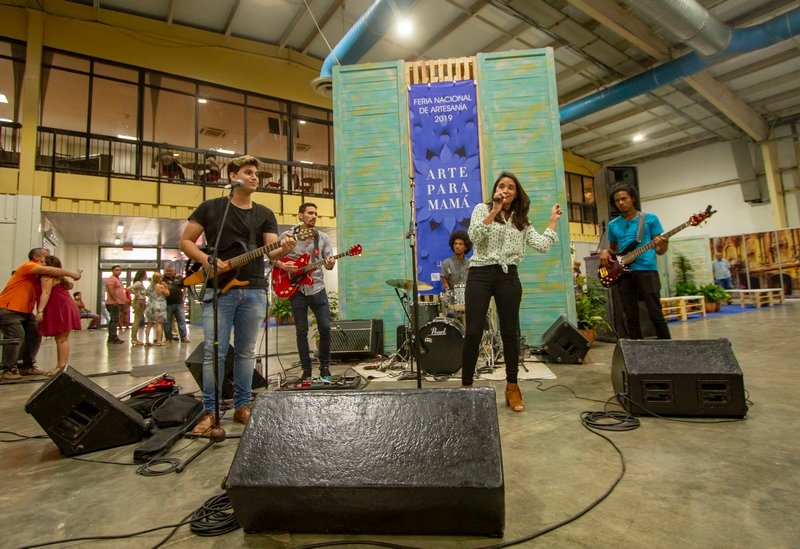
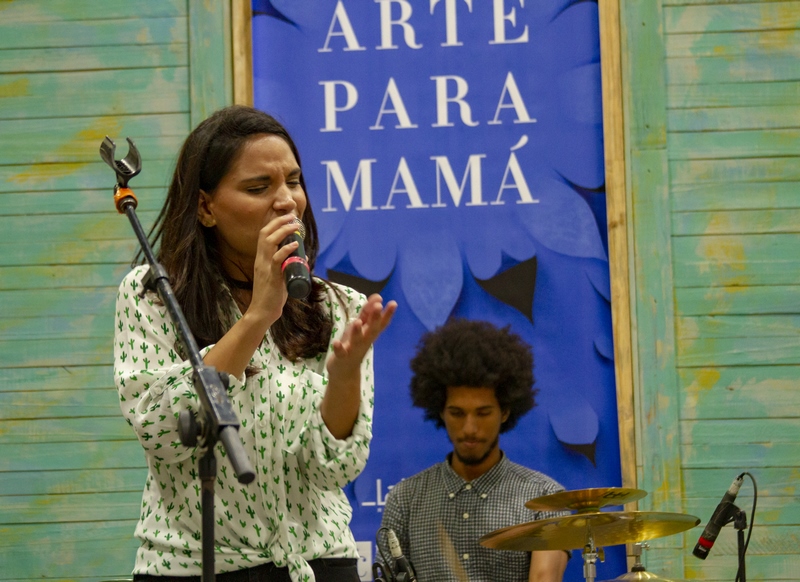
With the presentation of the young artist Annie Garcés, the National Craft Art Fair for Mom was inaugurated.
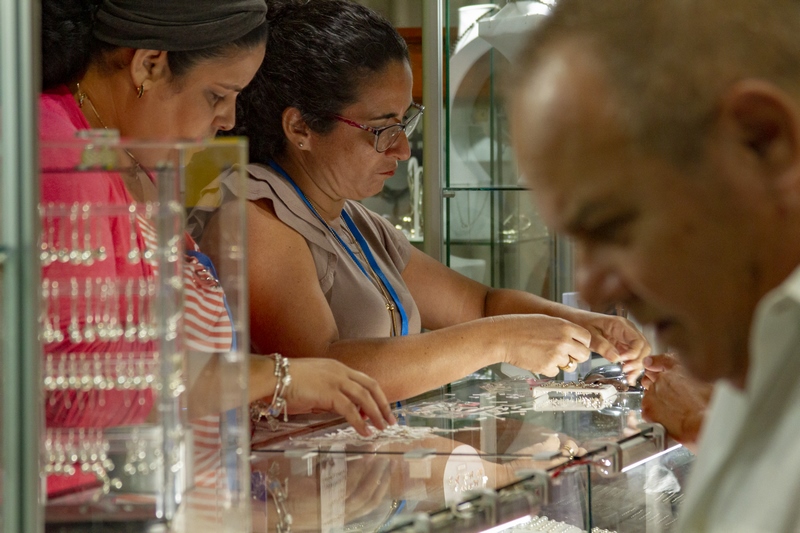
Visitors to the fair found a wide variety of high quality craft products.
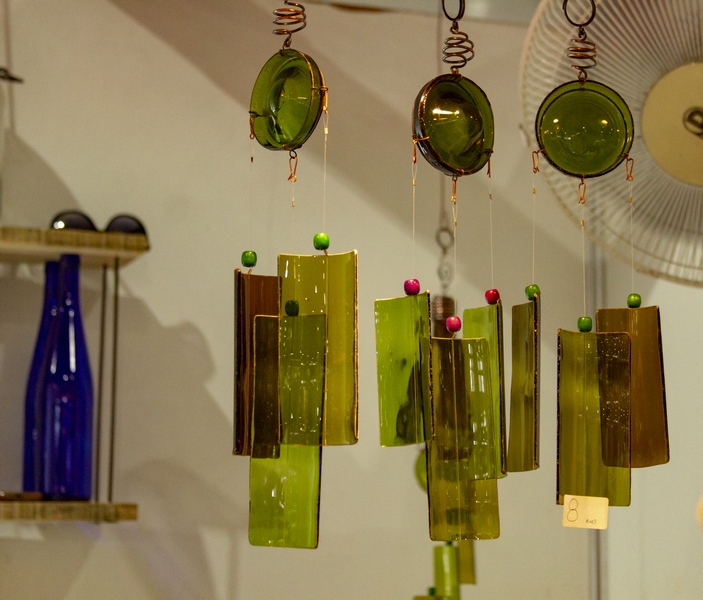
Crystal rattles, very popular among admirers of Cuban craftsmanship.

Necklaces, chains, earrings and other accessories made of silver reaffirm the skill of Cuban goldsmiths.
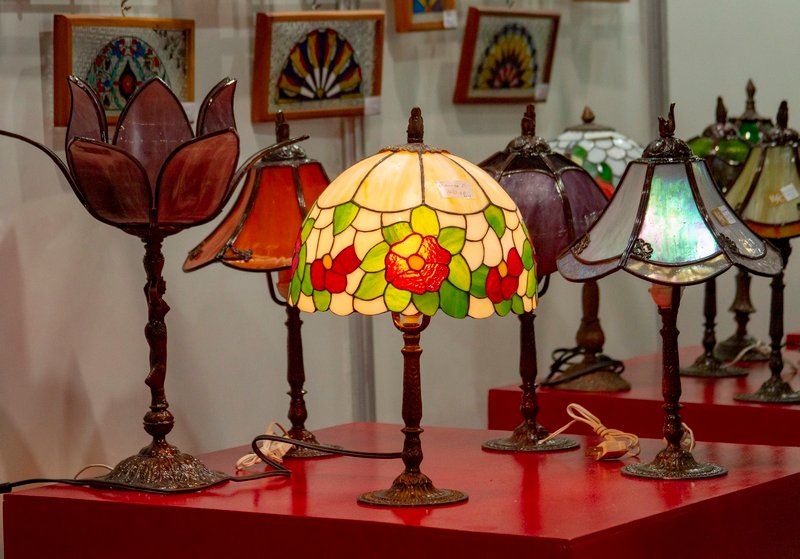

Table, wall and ceiling lamps dazzle with an exquisite workmanship.
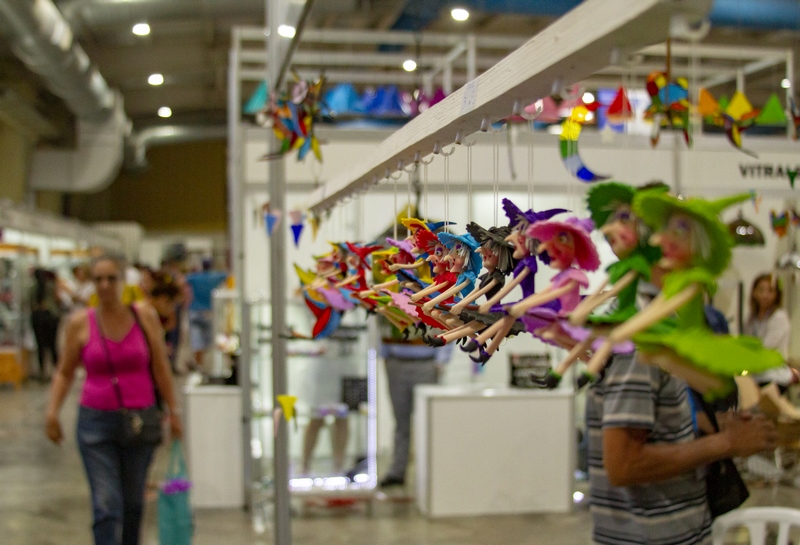
The traditional witches could not be absent from a craft fair.

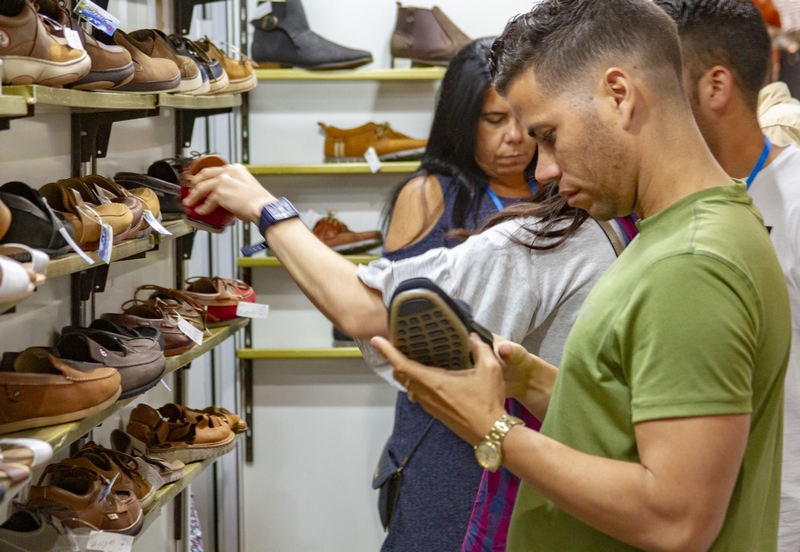
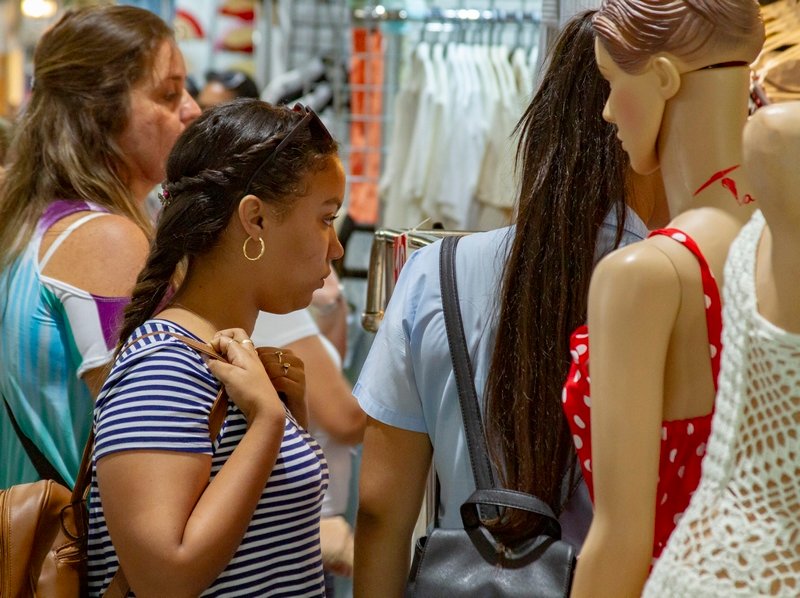
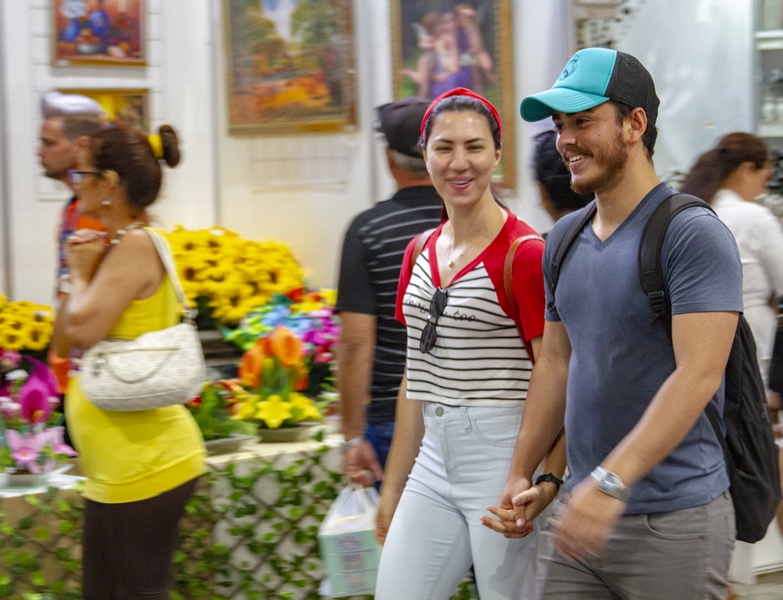
Young people are looking for items that meet their demands in terms of fashion and quality.
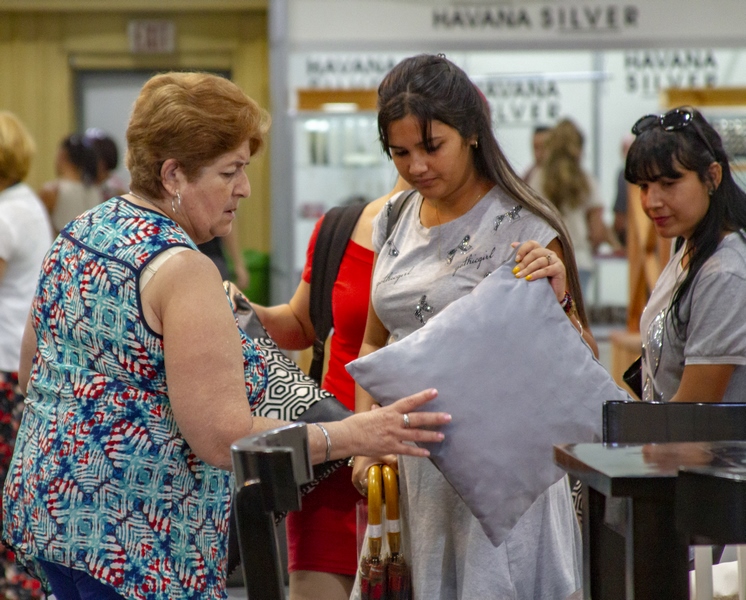
For all tastes.

Furniture for all home spaces.
Photos: Maykel Espinosa Rodríguez
Coppelia will recess its services

Coppelia Ice Cream will recess its services from May 2 to June
Translated and edited by Walter Lippmann for CubaNews.
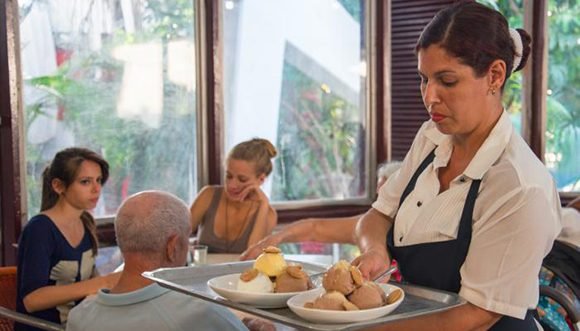
Coppelia ice-cream parlor. Photo: Joyme Cuan/ Tribuna de La Habana.
The Coppelia ice cream parlor, located in the central streets L and 23, in Havana’s Vedado, will close its services to the public for maintenance and repair work from next May 2 until June, and simultaneously will also cease production of the ice cream factory of the same name.
According to a note to our editorial staff, “the objective is to make technological improvements in the factory, improve the ice-cream production processes, and create the conditions for the definitive and stable production of Coppelia ice-cream.
“Taking advantage of this stop, improvements and maintenance actions will also be carried out in the ice-cream parlor, which will allow a better service to the population and the rescue of offers that have always characterized this emblematic site of the capital”.
We hope that the changes are not only structural, but that the reopening will lead to an improvement of the service, Achilles’ heel of the installation.
REVIEW: Vicki Huddleston’s Cuba memoir
Comments by By Dr. Néstor García Iturbe Translated and edited for CubaNews The first commentary on this book refers to what is printed on the cover as it is announced as “a diplomat´s chronicle of America´s long struggle with Castrós Cuba”, which does not reflect the reality of what is presented in the book. Part 1 of the book recounts Vicki Huddleston’s stay at the State Department’s Office of Cuban Affairs from 1989 to 1993. In referring to this stage, the author failed to take into account 30 years of aggression by the United States against Cuba, including the beginning and strengthening of the economic blockade, the invasion by the Bay of Pigs, the Missile Crisis and the thousands of terrorist activities and sabotage that Cuba suffered during those thirty years. That’s actually an important part of “Americás long struggle with Castro´s Cuba.” The correct thing would have been for the cover to show that the chronicle to which reference is made only from 1989 onwards, since in the way it is written it seems to have been written to cover the whole period since the beginning of the Cuban Revolution. In the first chapter she gives us a sample of the alliance between the U.S. government with the worst of the Cuban exiles, mainly with the Cuban American National Foundation and the Brothers to the Rescue [BTTR]. It presents the latter as an almost philanthropic organization dedicated to rescuing rafters, when it repeatedly violated Cuban airspace to launch propaganda and explosive devices. The author herself reports that, as a State Department official, in some of these violations of Cuban airspace, she travelled as a passenger on one of the BTTR planes. This is an example of something that an U.S. government official is not supposed to do. In her book, Mrs. Huddleston tries to describe, according to her, the police regime in Cuba, especially organized by the State Security, which she says does not miss any movement of foreign diplomats. Assuming that the author was totally convinced of what she said, we could describe what she sees as naïve during Illinois Governor George Ryan’s visit to Cuba. She states that during his stay she prepared a meeting attended by various ambassadors, and several of the so-called “dissidents”. And that in order to be able to speak freely, at the end of the meal she offered in her home, she waited for the servants to leave the room where they were gathered to begin the testimonies and opinions of each of them. If Cuban security has such a broad and efficient control, how many microphones would there be in the premises selected by Mrs. Huddleston to hold the secret meeting? The interference in Cuba’s internal affairs is also recognized by the former ambassador, when in a meeting with Colin Powell, she told him how she carried out actions with dissident groups, private libraries and independent journalists, adding that if they had more resources they would do much more. What would be the attitude of the U.S. government if Cuba or another nation were to begin to foment opposition for the purpose of overthrowing the established regime? Is that the right attitude of a diplomat representing his country to another? The book, at least, gathers the maneuvers and activities carried out by the United States against Cuba in order to destroy the Cuban Revolution. A true compendium of illegalities, dirty maneuvers, violations of diplomatic law, conspiracies and interference by the United States in Cuba’s internal affairs. A better title for the book would have been “Our Crook in Havana”. June 6, 2018
Comentarios del Dr. Néstor García Iturbe El primer comentario sobre este libro se refiere a lo que tiene impreso en la cubierta pues se anuncia como “a diplomat´s chronicle of America´s long struggle with Castrós Cuba”, lo cual no refleja la realidad de lo que se expone en el libro. La parte 1 del mencionado libro relata la estancia de Vicki Huddleston en la oficina de Asuntos Cubanos del Departamento de Estado a partir de 1989 hasta 1993. Al referirse a esa etapa el autor ha dejado de tomar en consideración 30 años de agresiones de Estados Unidos hacia Cuba, lo que incluye el inicio y fortalecimiento del bloqueo económico, la invasión por Bahía de Cochinos, la Crisis de los Misiles y miles de actividades terroristas y sabotajes que durante esos treinta años Cuba sufrió. Esa es en realidad una parte importante de “Americás long struggle with Castro´s Cuba.” Lo correcto hubiera sido que en la cubierta apareciera que la crónica a la que se hace referencia e solamente a partir de 1989, pues en la forma en que está redactado parece que fuera durante todo el período desde el inicio de la Revolución Cubana. En el primer capítulo nos da una muestra de la alianza del gobierno estadounidense con lo peor del exilio cubano, principalmente con la Fundación Nacional Cubano Americana y con los Hermanos al Rescate mostrando estos últimos como una organización casi filantrópica dedicada rescatar balseros, cuando la misma en repetidas oportunidades violó el espacio aéreo cubano para lanzar propaganda y artefactos explosivos. La propia autora relata que siendo funcionaria del Departamento de Estado, en algunas de esas violaciones del espacio aéreo cubano viajó como pasajera en uno de los aviones. Una muestra de algo que supuestamente no debe hacer un funcionario oficial del gobierno estadounidense. En su libro la señora Huddleston trata de describir, según ella, el régimen policiaco en que se vive en Cuba especialmente organizado por la Seguridad del Estado, que según ella no le pierde movimiento alguno a los diplomáticos. Partiendo de que la autora estuviera totalmente convencida de lo que dice, pudiéramos calificar de ingenuo lo que describe durante la visita a Cuba del Gobernador George Ryan. Plantea que durante la estancia del mismo preparó una reunión a la que asistieron distintos embajadores, varios de los llamados “disidentes” y que para poder hablar libremente, al terminar la comida que ofreció en su casa, esperó a que los sirviente abandonaran la habitación donde estaban reunidos para comenzar los testimonios y opiniones de cada uno. ¿Si la seguridad cubana tiene un control tan amplio y eficiente, cuantos micrófonos habría en el local seleccionado por la señora HUDDLESTON para efectuar la reunión secreta? La injerencia en los asuntos internos de Cuba también es reconocida por la ex embajadora, cuando en una reunión con Collin Powell, le relataba como realizaba acciones con grupos disidentes, bibliotecas privadas y periodistas independientes, agregando que si tuvieran mas recursos harían mucho mas actividades. ¿Cuál sería la actitud del gobierno de Estados Unidos si Cuba u otra nación comenzara a fomentar la oposición con el propósito de derrocar el régimen establecido? ¿Es esa la actitud correcta de un diplomático que representa a su país ante otro? El libro, al menos, recoge las maniobras y actividades realizadas por Estados Unidos contra Cuba con el fin de destruir la Revolución Cubana. Un verdadero compendio de ilegalidades, maniobras sucias, violaciones a lo establecido en el Derecho Diplomático, conspiraciones e injerencia por parte de Estados Unidos en los asuntos internos de Cuba. El mejor titulo para el libro “Our crook in Havana. 6 de junio 2018
Our Woman in Havana by Vicki Huddleston
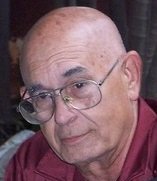
by Walter Lippmann.
Our Woman in Havana por Vicki Huddleston

Havana’s 500th Anniversary

Looking Toward Havana’s 500th Anniversary
 By Graziella Pogolotti
By Graziella Pogolotti
digital@juventudrebelde.cu
A CubaNews translation.
Edited by Walter Lippmann.
The information panorama is beginning to show signs of preparations for the forthcoming commemoration of the fifth centenary of the founding of Havana. Many of us were eagerly awaiting this promising announcement, because the passing of time has left scars in a city endowed with unique values and the deterioration of the environment is inevitably reflected in the behaviour of the citizens who live there.
In this context, I think it is right to begin the urgent rescue operation with the restoration of order and cleanliness and to offer concrete answers to the most pressing demands of daily life in the neighborhood. Thus, from the grassroots level, it is possible to appeal to the committed and participatory action of the inhabitants.
The rediscovery of the urban values that have characterozed, through an incessant secular accumulation, the profile that makes the capital unique, cannot be postponed and is no less important. Eusebio Leal’s stubborn preaching has helped to place the heritage legacy forged in colonial times in the place it deserves.
In the remote days of its foundation, Havana was a disorderly agglomeration of adobe and wooden shacks, located next to the port, subject to devastating fires and the threat of the freebooters. With the passage of the fleets and the construction of the defensive system, streets were laid out and houses became larger. The image of the city was configured with its palaces in dialogue with the squares. Moderately baroque, the façade of the cathedral has a space of perfect proportions, open and intimate, like a theatre. After all, the need to preserve urban planning imposed the requirement to delineate regulations through municipal ordinances. Oriented in various directions, the roads, still in use, connected the centre of the city with the surrounding territories.
The expanding city grew westward in successive stages. In search of a more favorable climate, the wealthy built mansions next to the Calzada del Cerro. They would then go to Vedado, Miramar, Cubanacán. In the uninterrupted movement in space and time, stylistic and epochal marks crystallized. They form a treatise on architecture and urbanism, a vocation for modernity tempered by the local context.
The first Industrial Revolution unleashed, in the nineteenth century, the excessive growth of cities. Faced with the danger of a polluting proletarianization, Baron Haussmann made Paris the spectacular scene that we know today. The initial notions of urban design were being established, which has now become a complex transdisciplinary knowledge, aimed at restoring the human dimension to the habitat with the participation of technical knowledge for the management of construction, hydraulic infrastructure networks and waste disposal, adequate road traffic and the social sciences, particularly sociology.
With a modernizing will, Vedado was born presided over by a clear notion of integral urban design. The layout of the main avenues favored rapid communication with the city. Mandatory regulations determined the height limits of the buildings and the lawn area that separated the houses from the sidewalks, conducive to a lifestyle and gave a unique visual characteristic of the area.
In the middle of the last century, financial speculation over land value threatened to subvert the harmonious coherence of the whole. The Revolution was able to preserve its original character for many years, contrary to what happened in other countries where a predatory gigantism destroyed significant historical legacies.
The effects of the economic difficulties, from the special period onwards, partly lacerated the assets we had managed to preserve. Aside from legislation, improvised interventions appeared everywhere. However, in essence, the original imprint of the area remains. We are still in a position to safeguard it if we become aware of its value, because the very rich built heritage of Havana extends beyond the colonial zone. This is how the writers perceived it in some of the best pages of our literature, and it also manifests itself in the latent and underground memory of our popular music.
The approaching half-millennium poses an immense challenge. To assume it wisely and turn it into a collective will is a way of growing. It can’t all be done at once. It will have to be tempered as much as possible, according to the available resources. However, the most important thing, however, is to take into account the imminent while considering the perspective of the future based on the key factors that are unique to the region.
Havana Dresses in Style

Havana Dresses in Style
By: Ismael Francisco
October 27, 2017
 Photojournalist at Cubadebate. He has worked at Granma, Prensa Latina and AIN. He has made graphic coverage of important political, sports and social events in Cuba and other parts of the world. He has won several awards and journalistic recognitions.
Photojournalist at Cubadebate. He has worked at Granma, Prensa Latina and AIN. He has made graphic coverage of important political, sports and social events in Cuba and other parts of the world. He has won several awards and journalistic recognitions.
A CubaNews translation by Walter Lippmann.
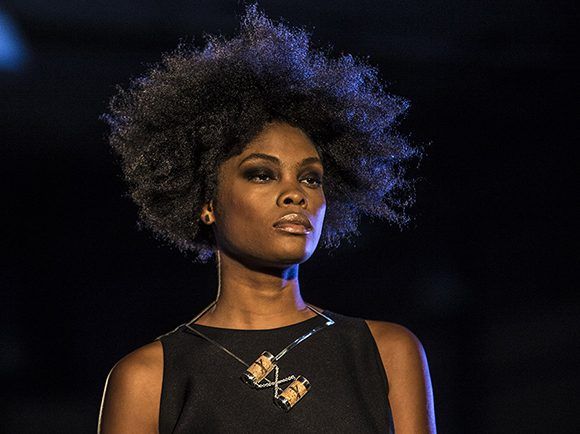
Fashion Week in Havana, collection of ROX 950. Photo: Ismael Francisco / Cubadebate.
The Fashion Week in Havana: Crafts and Identity, serves as a stimulus to creativity based on Cubans’ know-how, in accordance with the aesthetic and functional values of our idiosyncrasies.
Until Saturday the 28th, the event will offer parades in the old Warehouse of Wood and Tobacco, in the Alameda de Paula.
More than 70 creators, including designers and artisans who work in events such as textiles, jewelry, leather and costume jewelery, participate in this event sponsored by the Cuban Association of Craft Artists and the Cuban Fund of Cultural Assets.

Fashion Week in Havana, collection by designer Mario Freixas. Photo: Ismael Francisco / Cubadebate.
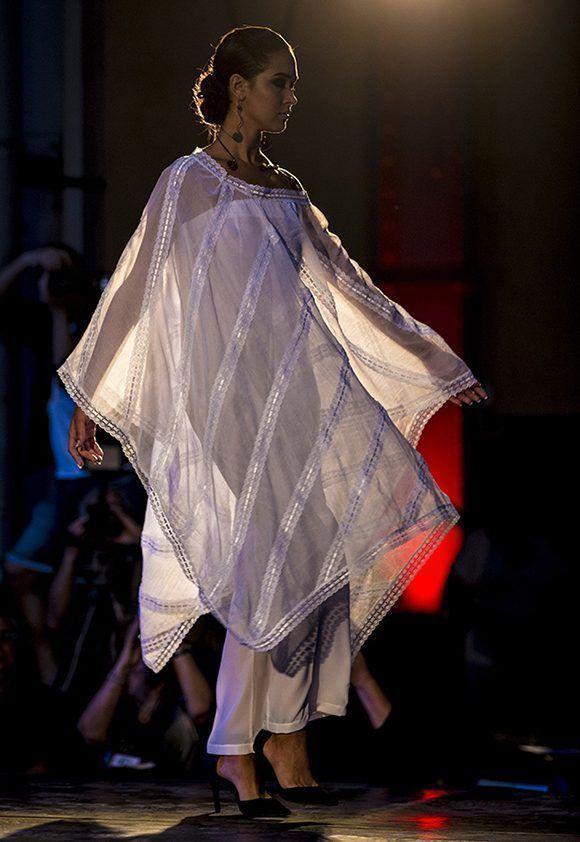
Fashion Week in Havana, collection of the designer Mario Freixas. Photo: Ismael Francisco / Cubadebate.
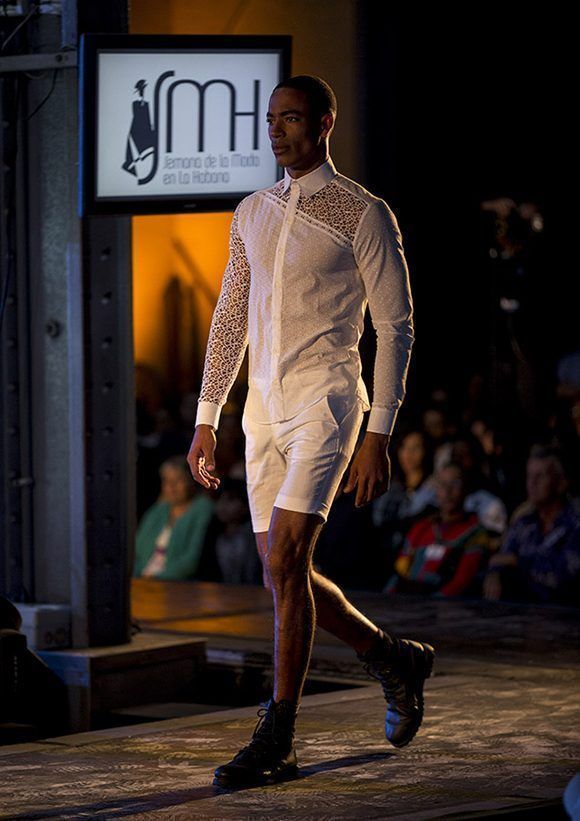
Fashion Week in Havana, collection by designer Mario Freixas. Photo: Ismael Francisco / Cubadebate.
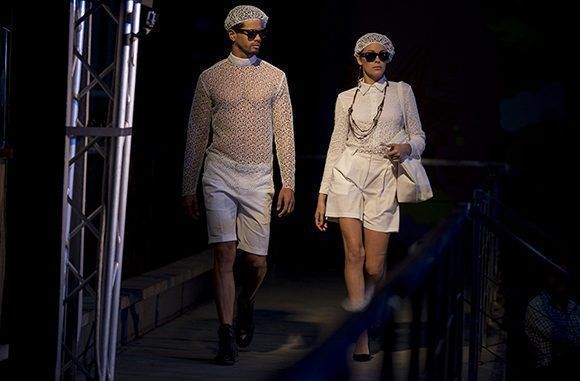
Fashion Week in Havana, collection by designer Mario Freixas. Photo: Ismael Francisco / Cubadebate.
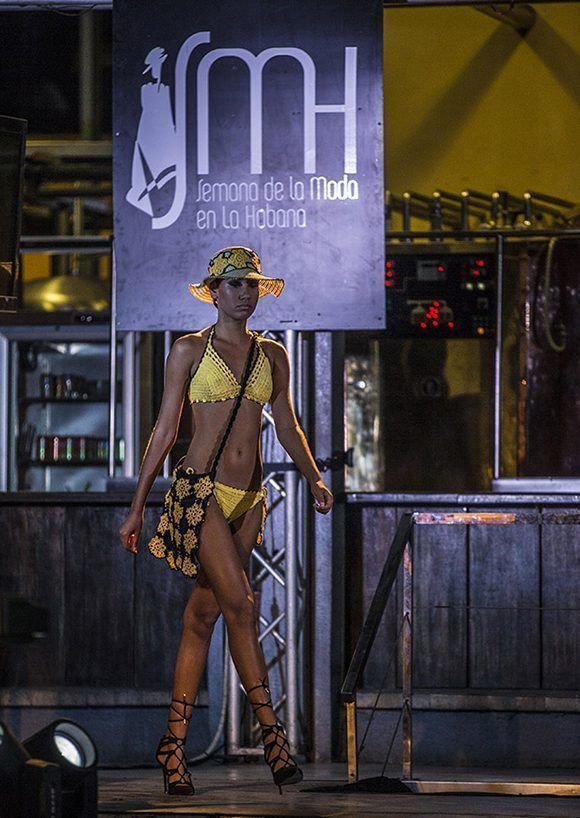
Fashion Week in Havana, collection of designer Rosa Xiomara Valdés. Photo: Ismael Francisco / Cubadebate.

Fashion Week in Havana, collection of designer Rosa Xiomara Valdés. Photo: Ismael Francisco / Cubadebate.
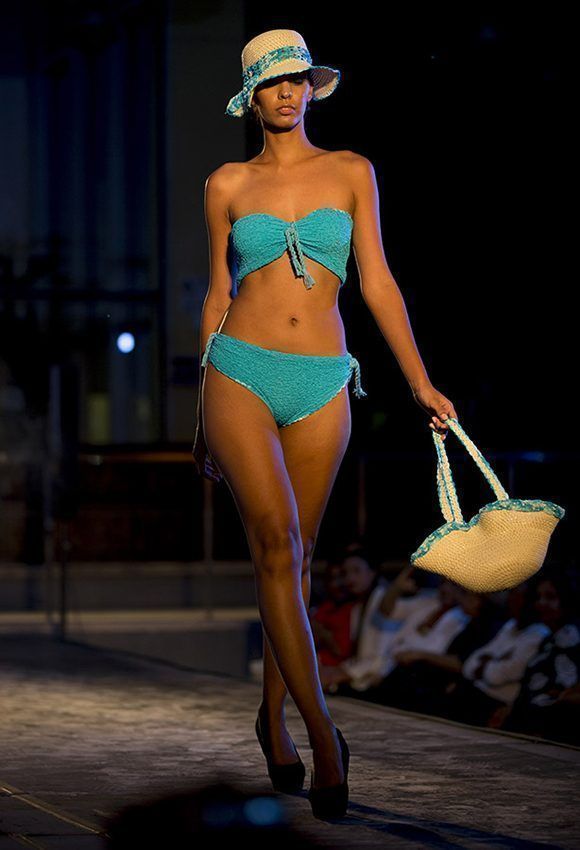
Fashion Week in Havana, collection of designer Rosa Xiomara Valdés. Photo: Ismael Francisco / Cubadebate.

Fashion Week in Havana, collection of designer Rosa Xiomara Valdés. Photo: Ismael Francisco / Cubadebate.
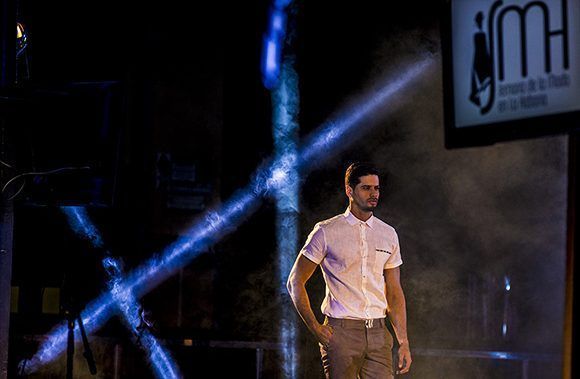
Fashion Week in Havana, designer Yunior Hierro Leyva’s collection. Photo: Ismael Francisco / Cubadebate.
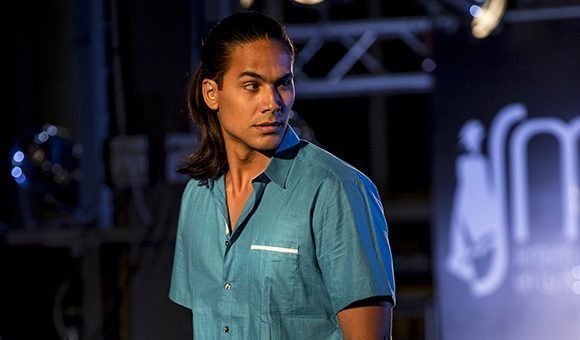
Fashion Week in Havana, designer Yunior Hierro Leyva’s collection. Photo: Ismael Francisco / Cubadebate.
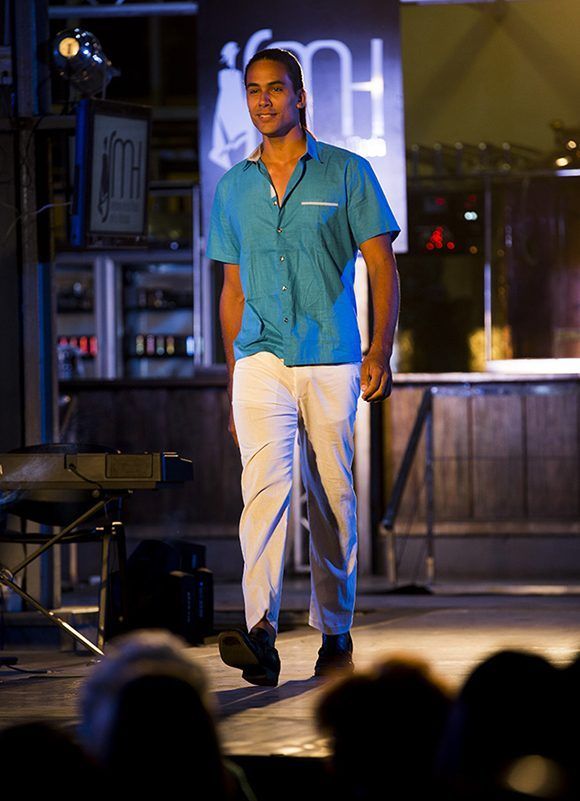
Fashion Week in Havana, designer Yunior Hierro Leyva’s collection. Photo: Ismael Francisco / Cubadebate.
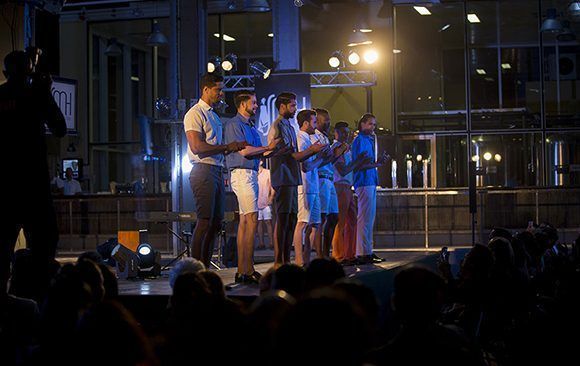
Fashion Week in Havana, designer Yunior Hierro Leyva’s collection. Photo: Ismael Francisco / Cubadebate.
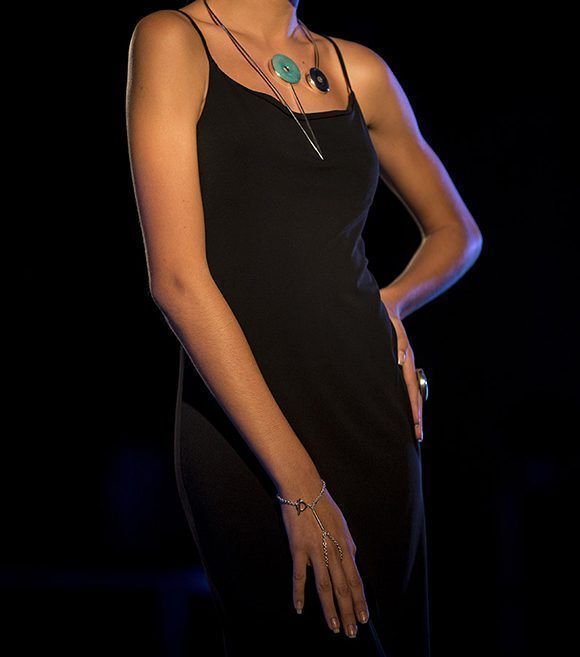
Semana de la Moda en la Habana, colección de ROX 950. Foto: Ismael Francisco/ Cubadebate.

Semana de la Moda en la Habana, colección de ROX 950. Foto: Ismael Francisco/ Cubadebate.

Fashion Week in Havana, ROX 950 collection. Photo: Ismael Francisco / Cubadebate.

Fashion Week in Havana, ROX 950 collection. Photo: Ismael Francisco / Cubadebate.
Virgin Group Founder Visits Habana Vieja
Important British Empresario Visits Habana Vieja
By Editor, Havana Radio/ Photos: Alexis Rodríguez
October 20, 2017
The Posadas Return to Havana

The Posadas return to Havana
By Gabino Manguela, Published July 3, 2017.
A CubaNews translation. Edited by Walter Lippmann.
Someone once said that there were no safer businesses than funeral homes and posadas (hot-pillow motels). The reasons are obvious: death and love are simply inevitable. However, their differences are notable: in the first, you cry, in the second you enjoy.
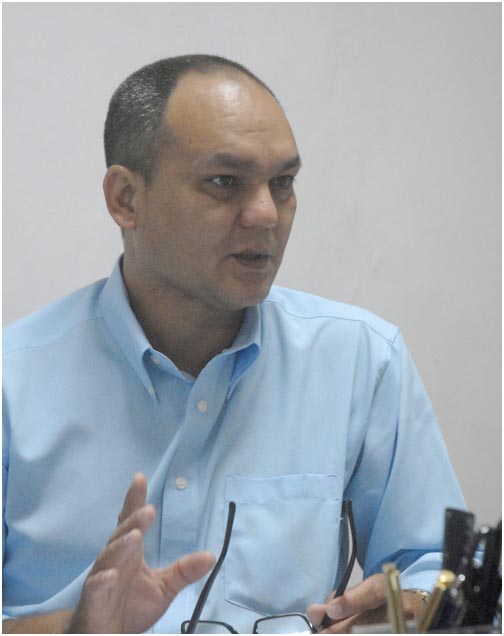
Alfonso Muñoz Chang, Director of the Provincial Lodging Company of Havana, said: “The main thing is to demonstrate that this purpose can be fulfilled.” Photos: Agustín Borrego Torres
A CubaNews translation.
Edited by Walter Lippmann.
With the exception of the very young, the most Cubans remember at least something about the posadas: be it one unforgettable kiss, or the call of the clerk indicating to the lovers that their time was up. After the first position on the island –Carabanchel– established in the late nineteenth century and located in San Miguel and Consulado, in a three-story building with 22 rooms and apartments with independent entrance from the street–dozens of such establishments flourished. The rite was always the same: the man took care of the front desk process while the woman, with her face turned down, stayed at a distance keeping her discretion.
There had been many in the capital but, according to press reports, there were 60 in 1973, and only 30 in 1989. The truth is that despite long lines and the measures of “camouflage” that some developed in order not to be caught by prying eyes, the vast majority of people –myself included– wanted to go to these places because there we made love. “Villa Cándida”, “Dos Palmas”, “11 y 24”, “La Monumental”, “Edén Arriba” and “Edén Abajo”, “La Campiña” and many others, were names repeated furtively most of the time. They were open 24 hours and everyone knew their location, details and signs, although no one talked openly about them.
The posadas not only guaranteed a happy ending to the arrangements of interpersonal relationships, but were also an option for couples faced with the realities that were becoming more acute in the country, namely the lack of housing. No one had any doubts about the convenience of having these establishments, and even tradition demanded to keep them.
But, by the 90’s of last century, in view of very evident economic shortages, it was decided to move the victims of hurricanes –persons who had lost their homes– to many (almost all) of these buildings. The remaining buildings faced the impossibility of receiving adequate maintenance, and suffered much deterioration. Little by little the posadas, or INIT motels [Instituto Nacional de Industria Turistica – today INTUR] as they were called, disappeared from the national scene.
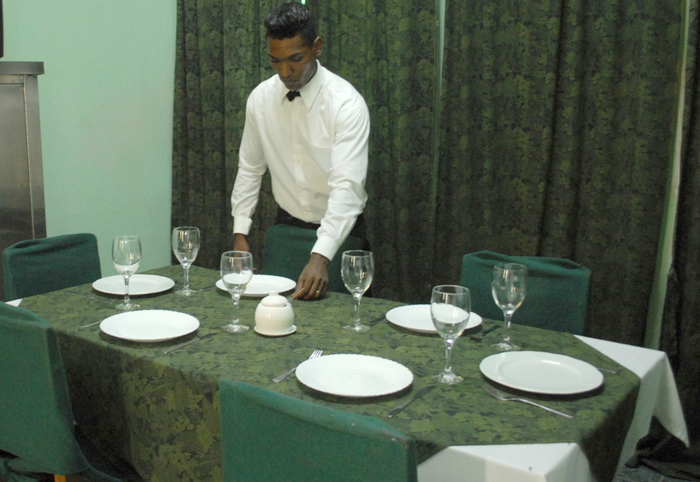
Among the services that the Vento motel will offer is a restaurant; perhaps one of the features that will make it stand out from the rest.
The new service will begin at Vento
The Empresa Provincial de Alojamiento de La Habana [Provincial Lodging Company of Havana] is in charge of an important network of accommodations in 27 different facilities in the capital where both natural and legal persons can today rent a room for a single night. This is the entity in charge of bringing about the reopening of the service the posadas used to offer: that is: lodging by the hour, with a minimum of three hours.
Except from the people who have a private room, own a house, or can pay for a night at a hotel, the rest can only afford hourly rents, parks, dark stairs, the beach or even the Malecón (seawall).
“This is a service that is now in the hands of private persons who provide the service lost with the famous posadas. We believe in the real possibility of bringing it back and developing it,” says Alfonso Muñoz Chang, director of the company. Today the couple that goes to a private lodging must pay the owner at least 5 CUC or its equivalent in CUP [Cuban pesos] –a high figure for the average Cuban– for three hours of amourous privacy.
Generally speaking, the room has air conditioning, a fridge, running cold and hot water and adequate comfort. Of course, that does not include beer at 1.20 CUC or more, drinks or a bottle of rum at sky-high prices, appetizers or some other finger-food to make the moment more pleasant.
Comfort, hygiene and privacy are fundamental in this business, private entrepeneurs say. This will undoubtedly be a challenge for the state-owned service, both in terms of price and comfort.
“We will start with the Vento Motel, on Vento and Santa Catalina. It is a two-story building with 16 rooms with bathrooms and other technical requirements, just a few meters away from where there used to be a well-known posada or Init motel,” said Muñoz Chang.”
“We are also working,” he added, “on other ideas to expand the service. From the old posada network we were also given the famous Monumental, a unit with 20 rooms and car parking space.”
We´ve been working on the project for a while and have already submitted it; but the funding is steep and we could not include it in this year’s plan. “We believe that by 2018 we’ll be able to undertake it. There is the will of the government in the capital to prioritize that emblematic place, which is not crumbling or anything like that, but needs work,” he said.
The Provincial Company director indicated that the strategy foresees –in addition to “Vento” and “La Monumental”– the recovery with equal purposes of “Edén Arriba” and “Edén Abajo”, as well as the “Motel Ocho Vías”, a facility that meets the indispensable requirements for this service. To think about diversifying the options for love is not a crazy idea: it is a reality that affects everyone and should not turn into a luxury item available only to a few.
“We can do many things as a company, but others equally important do not depend on us –he stressed. Our aim is to recover that in-demand service, of great social impact and, undoubtedly, very profitable. “The main thing is to demonstrate that we can fulfill that purpose at the state level, and although we are sure of succeeding, we do not want to create false expectations,” he concluded.
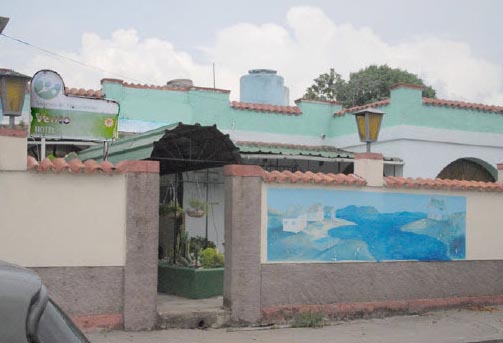
The Vento hotel has a staff of 28 workers, though that could decline after September when by-the-hour service begins. “It will be a very convenient service, plus the city needs it. Each room will have air conditioning, TV, refrigerator and phone, and we will have restaurant and food service. The workers, for their part, are very enthusiastic. After counting their results, they’re sure to increas their salaries, commented Maria Seerling, the current administrator.
[/t]
Will Havana Prosper?
Will Havana Prosper?
By Iroel Sánchez
A CubaNews translation.
Edited by Walter Lippmann.
March 21, 2017
Some time ago I published some questions about Havana:
“Is it a coincidence that places like Parque Lenin or Coppelia [ice-cream parlor in Vedado], symbols of the democratization of recreation and the access of the majority to refinement –opened by the collective project of the Revolution– languish between bad service and structural deterioration, while the idea that the good and the beautiful are the exclusive patrimony of the pre-revolutionary past? Why is the Latin American Stadium increasingly called the “Estadium del Cerro” in our media?
“Is it a Havana for tourists the one that will reach its 500th anniversary, reproducing the celebrations with the colonial flavor that –unlike what happened with the half millennium of Santiago de Cuba– took place in many of the towns founded by the Spaniards? Or as in Santiago, the neighborhoods built by the Revolution –and now more or less vandalized– (Camilo Cienfuegos, San Agustín, Alamar, Mulgoba, Reparto Electrico …) can renew their (lack of) urbanism and raise the quality of life of hundreds of thousands of Havana workers who have never been able to sit in a “paladar” [private restaurant]?
“Will the newly refurbished Capitolio of Havana be an old building for a new democracy, or a shell that –between marbles and bronzes, so dear to the dictatorships and plutocracies– forgets to consecrate the name of Jesus Menendez, the black working-class parliamentarian who imposed on the Yankees and the Cuban bourgeoisie a fair deal for the sugar workers. As a result, he was murdered despite his parliamentary immunity in “the most democratic period in contemporary Cuban history,” a phrase taken from an article in the Spanish newspaper El País signed by a Cuban “historian”?
And I return to these questions because, fortunately, for a few months now in the capital of the country we can see the growth of a transformative effort in favor of the majorities: renewing public spaces –like those mentioned in my questions– accessible to those who lack the resources to visit the new recreation centers which have prospered under the new economic measures. Large agricultural markets have been opened on the outskirts of the city. State-run gastronomic facilities with popular prices have been rescued. Fountains that had been without water for decades are running again. And other achievements are beginning to take shape with the decentralized funds collected by the municipalities. It can be said that, through these actions, the city thrives, because most of its inhabitants prosper.
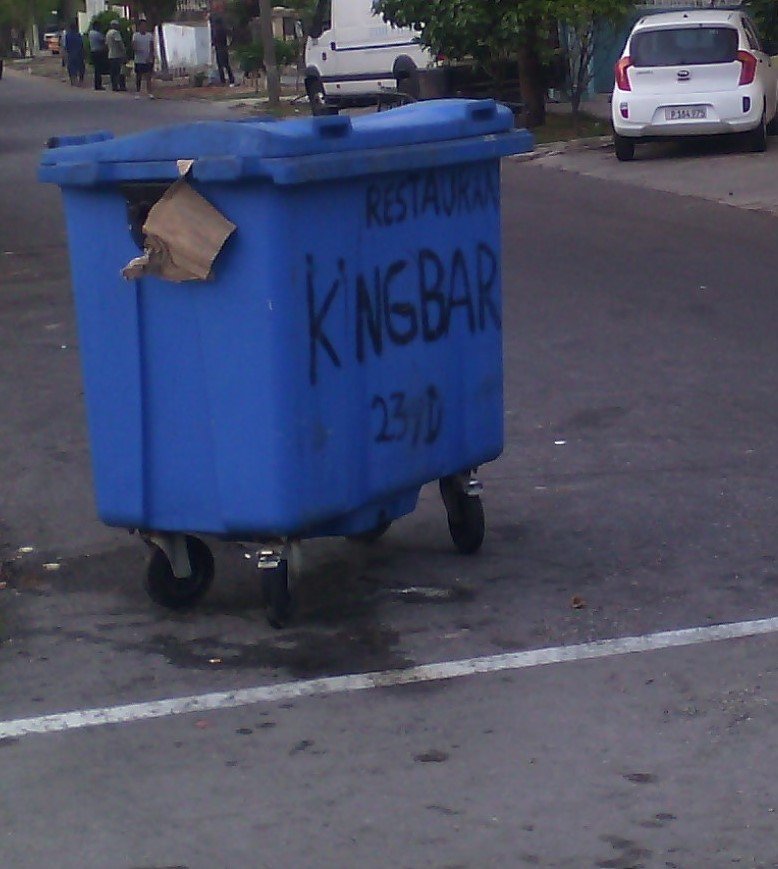
But if that effort is not accompanied by the participation of the people in creating a culture of civic order and urbanity, all this effort will be like pedaling on a stationary bicycle. This participation must stem from a popular debate –we have the organizations and media to do so– that would serve for the dissemination and production of consensus around the rules that regulate and punish –if they were enforced– the frequent aggressions against common property.
To give just one example: the debris generated by construction work –for repairing opulent mansions acquired by landlords and the new rich in the most central municipalities of Havana– will continue to be dumped with impunity on street corners, so that the state sector –that is: the lowest paid workers– pay for its free collection without taking into account that, as explained by the British academic Emily Morris:
“As the non-state sector has developed, it has become increasingly clear that the relatively inefficient private firms have been able to thrive within the national economy since their costs in Cuban pesos, including labor, are undervalued at the CADECA / CUC rate they use for their transactions. In fact, the Cuban state is subsidizing the new non-state sector through the underrated rate of CADECA. Meanwhile, state-owned enterprises have to use the overvalued official exchange rate, a serious disadvantage in terms of their competitiveness. A form of “monetary illusion” which means that efficient state-owned enterprises report losses and therefore cannot raise capital for investment; while private entrepreneurs operating at very low productivity levels enjoy strong hidden state subsidies but complain of excessively high taxes.”
The non-state economy has much to contribute in Cuba; but illegality, tax evasion, hoarding, appropriation of the common good, and speculation with deficit products are not the best allies to convince of its virtues.
The first thing that should be clarified is what we mean when we use the verb “to prosper”.
In those economically “most prosperous” territories (such as: Trinidad –where business has developed along with the growth of garbage in the streets, and the notorious tax evasion reached such extremes that the ONAT [National Office for Tax Collection] of Sancti Spiritus had to be moved over there; Viñales –where teachers have to be taken from other municipalities and private pools try to steal the scarce water supply in times of drought; or Havana, where part of the efforts to supply popular restaurants and cafeterias, education and health centers, drains to private restaurants or bars that remain open until five in the morning –not until 3:00 am as it is regulated) businesses are favored by the indirect subsidies of the CADECA 25 to 1 exchange rate, the low rates of water, gas and electricity conceived for domestic use, but used for profit; the free disposal of increased amounts of solid waste –as if this waste came from the kitchen of a home.
In this way development and prosperity will be patrimony of a few to the detriment of the majority.(CubAhora)
Mario Conde’s Havana Noir
PAGINA 12 (Argentina)
Mario Conde’s Havana Noir
The investigations of Leonardo Padura’s detective are in audiovisual form now. Jorge Perugorria plays the detective who investigates a series of crimes in a colorful and decadent Cuba
The script of the series is based on four novels by the Cuban author.
FOUR SEASONS IN HAVANA, by NETFLIX
By Federico Lisical
A CubaNews translation.
Edited by Walter Lippmann.
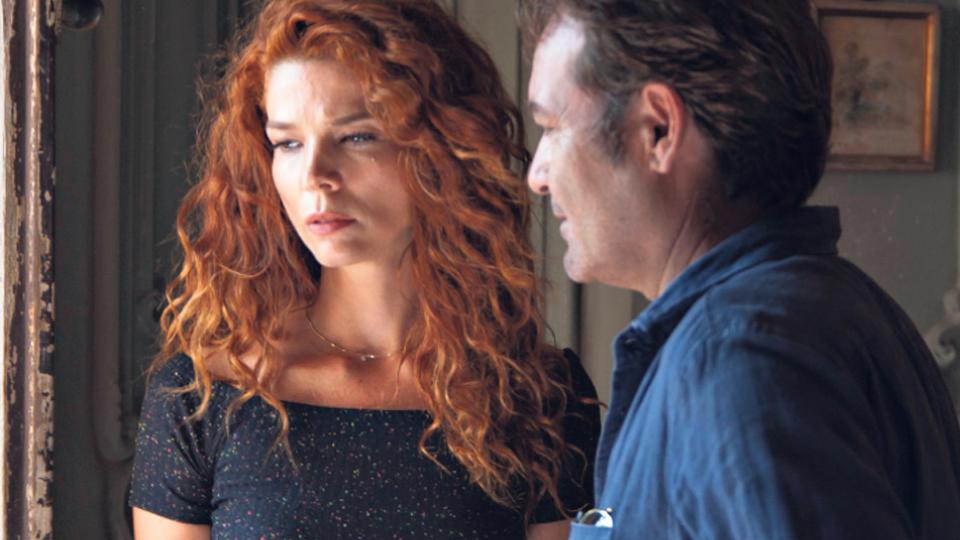
Los argumentos de la serie están basados en cuatro de las novelas del autor cubano.
“I decided to make a character who was in conflict with the reality he was living,” Leonardo Padura once told this newspaper. The Cuban writer was referring to Mario Conde, the officer who was the main character ofj his police novels and who now centers the NETFLIX miniseries Four Seasons in Havana (that since last Friday can be seen online). The series is based on stories in Padura´s four novels: Past Perfect, Winds of Lent, Masks, and Autumn Landscape.
This disenchanted but noble man, who does not seem to be a police lieutenant and has a great love for books, is interpreted by Jorge Perugorría. Almost to his regret, the best thing he knows how to do is solve mysteries and write up his wanderings with a typewriter. “There is no one better than Mario Conde to get into Havana, rummage through its darkness, and draw some light. That special insight the detective has, is particularly revealing. What I wanted to do was to make a kind of chronicle, a testimony of what recent Cuban life has been like. In each of his investigations, he reveals a sector of Cuban society, but also the humanity of a number of characters who live that reality day-to-day,” said the writer in another interview.
In total there are four episodes, ninety minutes each. They were directed by the Spaniard Felix Bizcarte, and the role of Padura himself in the adaptation was key, as well as that of his wife Lucia López Coll. Their intention was to preserve the tone of the novels and let the Cuban reality filter in naturally. What is the resulting Havana? One that shows its darkest and most sinful side. There is corruption, traffickers of all kinds –of drugs and influence– has been but there is also the dream of what the revolution could have been. Conde is a romantic who goes around throwing phrases for whoever wants to listen: “Havana has fallen so much that is has gone to shit”; “Cops investigating cops… What the hell is going on?”
The context is crucial as the books were published between 1991 and 1998 and reflected what was happening on the island after the end of the Cold War, the tightening of the embargo, and the regime’s opposite sides. As the author said, “… I learned from Hammett, Chandler, Vázquez Montalbán and Sciascia that a police novel can have a real relationship with the country’s environment; that it can denounce or touch concrete facts and not just imaginary realities.” “El Conde” moves about the capital of Cuba as a Philip Marlowe who suffers the heat, and fights his destiny, “doing what I have to do, but never what I really want to do.” The big difference with the iconic detective of suburban Los Angeles is that Conde is a cop. “It was totally unrealistic to have someone who was not a police officer investigate a crime in Cuba, especially if it was a murder,” Padura explained. But Conde also dreams of being a writer and that is what saves him.
This jaded subject is summoned to investigate the murder of a high school teacher while he is also looking into another case that has to do with his own past. In all of these there are several criminal associations. As in every noir police story, in addition to the investigations there are institutions tainted with indolence, elites complicit with business interests, femmes fatale, jazz music and seedy bars. Its main character is a researcher of the shadows but with a complex humanity and far from clichés. “Conde represents a generation of Cubans who believed in a country project that will never be, and feeds heavily on nostalgia. He’s a fucking nostalgic, as he defines himself, “said the actor who has the role.
The photography (by Spaniard Pedro J. Márquez) is one of the highest points of the production. The tone is twilight and oblivious to any “for export” intention. The rundown houses of the old quarters convey the stupor of the characters; and the danger in a harbor city when the sun goes down. The scenes of violence are given in unusual settings that can capture the audiences. In short, there are four genre stories within a very unique context that reflects the day-to-day life of the Caribbean city and its surroundings. One can easily perceive how the characters are linked: their body language, how they breathe and perspire, their unrefined speech that mispronounces sounds, how their food smells, and how they have sex. Four Seasons in Havana is, above all, a sensory experience. “Noir was never so colorful,” said one of the promotions for the miniseries; but it may be exactly the other way around.
Four Legends in One Single Night
- English
- Español

Four Legends in One Single Night
In late March, the legendary British band will give a concert in Havana’s Ciudad Deportiva, as reported by the Cuban Music Institute.
Author: Michel Hernández | michel@granma.cu
A CubaNews translation.
Edited by Walter Lippmann.
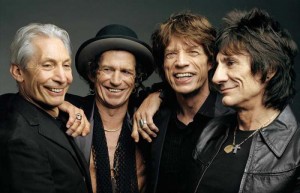
The Rolling Stones (from left): Charlie Watts, Keith Richards, Mick Jagger and Ron Wood plan to play in Havana by late March. (Photo taken from makingofezine.com)
Mick Jagger won’t talk with anyone. He’s attending a concert that a DJ organized specially for him while his crew keeps a tight rein on a crowd of onlookers striving to immortalize a picture of the Stones frontman in their cell phones. I stay nearby, watching the famous vocalist dancing on stage to the beat of electronic music, like he did earlier in another nightclub in town. A close member of his team remarks what I already knew by then: the Rolling Stones want to play here in Cuba. Serious talks are underway with the Cuban side to organize the performance.
The social networks “collapse” under the most famous still active rock band singer on Earth. He uploads the pictures he took in Old Havana as he sparks off fierce controversy about the true purpose of his visit to the Island. Never before had one of the Stones traveled to Havana. And now none other than the mythical singer of Satisfaction who decides to start the band’s history of relations with Cuba.
Jagger scours the city, pays surprise visits to some Cuban musicians, and hits the nightclub circuit together with some members of his crew. He’s known to be not just another tourist, but the musician that has just rescued from lethargy the wish of thousands of Cubans who no sooner had photographs of Jagger in their city than they started to dream of a Rolling Stones concert in Havana, a dream which is top of the sort of bucket list that we almost always write to make a note of the “first ten things I want to do before I die”.
Fortunately, the circle is beginning to close. At last, the Music Institute has confirmed that they discussing the possibility that the band could give a concert in Havana. Should their performance finally take place at Ciudad Deportiva in late March, the Cubans will be able to recreate an unforgettable stage of their lives. The negotiations with the Cuban authorities have been going on for months now, and part of the infrastructure for the concert has already arrived in our country.
Fellow Rolling Stones guitarist Keith Richards had revealed their plans in Europe, which Mick Jagger confirmed with his presence in Cuba last October. The band wants to play in Havana, and he’s putting his heart and soul into it. So everything seems to indicate that the thousands of Rolling Stones fans in Cuba will have a chance to see a dream come true when these four legends go on stage and, wrapped in the tongue designed by Andy Warhol, play a concert sure to become a landmark in both the band’s career and the Cuban scene. It will be the moment when those thousands, full of teen-like pep, will settle one of their greatest scores with their past, as well as an opportunity for the Stones to stand in front of what is likely to be the most feverish audience they have played for in their 50-year-long history.
Despite the inexorable passage of time, there’s no denying that the Rolling Stones are still in their prime, packing stadiums everywhere and speeding up the heart rate of their youngest followers in mammoth shows marked by savoir-faire, all-out dedication and as tremendous a display of energy as if they are celebrating themselves or trying to keep on beating the odds and making it clear that they come from a world where rock and roll was an act of faith, the gigantic business that revolves around the band notwithstanding.
Each Stone is a living legend. At 72, Mick Jagger stands out as a challenge to human nature, moving on stage like one possessed and singing with great dash, the obvious result of natural ways that only time provides. Jagger has always been in the eye of the hurricane and one of the few human beings on the planet capable of telling stories out loud about the wild and bright days of yore when rock ‘n’ roll went beyond the neighborhoods to become an indissoluble component of pop culture. Time hass yet to take a toll on Jagger as he continues giving himself over to each concert as if it were his last.
Keith Richards is a maven of the electric guitar. A hundred legends, be they true or false, hover over him that make him an object of worship among Rolling Stones fans. In fact, no few would like to take him to a lab to find out how, at 72, he can still play the guitar as if he were a freshman at the music academy. To top it all off, he does it with great mastery, thanks to his stick-to-itiveness and his skill at getting rid of the nonessential and playing categorically enough for his every riff to come exactly at the right time within the musical discourse. Keith is not an extreme guitar virtuoso; still, make no mistake: he’s far and away a guitar sensation beyond good or evil.
Drummer Charlie Watts is a very peculiar member of the Stones. At 74, he’s one of the band’s most versatile musicians and one of the most experienced ones to be found behind the drums. All the others, particularly, Keith Richards, have been greatly influenced by his way of playing, and he’s been the main stalwart that supports the relationship, at times stormy, among them. A jazz enthusiast, Watts also spends a great deal of his free time working on solo projects defined by the richness of his genre.
Ron Wood describes himself as a “guitar-playing poet”. The musician has found the time in between his commitments to the Stones to exhibit his works with images of old friends like Jimi Hendrix and Eric Clapton, among others. The youngest member of the band (he’s 68), Wood’s performance as a guitarist is quite discernible for his dexterity and flamboyant bearing on the stage.
As announced, this concert by The Rolling Stones will be a historic event bound to pave the way for other great bands to play in Havana. For instance, this author heard that Paul McCartney and U2 have stated their interest in giving concerts in Cuba. For the time being, Las Piedras Rodantes[1] are knocking on the door, and the Cubans are eager to fulfill a wish they have repressed for too long.
[1] Literal Spanish translation of The Rolling Stones (T.N.)

Cuatro leyendas en una sola noche
La legendaria banda británica ofrecerá a finales de marzo un concierto en áreas de la Ciudad Deportiva, según confirmó el Instituto Cubano de la Música
Author: Michel Hernández | michel@granma.cu
26 de febrero de 2016 22:02:42

Los Rolling Stones (de izquierda a derecha): Charlie Watts, Keith Richards, Mick Jagger y Ronnie Wood organizan un concierto en La Habana a finales de marzo. Foto: Tomada de makingofezine.com
Mick Jagger no quiere hablar con nadie. Asiste a un concierto de un dj organizado especialmente para él mientras su equipo mantiene a raya a los curiosos que quieren inmortalizar en sus celulares una foto del líder Stone. Me mantengo cerca y el célebre vocalista baila sobre la pista al ritmo de la electrónica, como antes lo hizo en otro club habanero. Un miembro cercano a su equipo comenta lo que para mí, ya en este momento, resulta obvio: Los Rolling Stones quieren tocar aquí y ya se está hablando seriamente con la parte cubana para organizar el show.
El cantante de la banda de rock en activo más célebre sobre la Tierra “colapsa” las redes sociales. Publica sus fotos tomadas en el Centro Histórico y despierta una ola de polémica sobre el verdadero significado de su paso por la Isla. Nunca antes un Stone había viajado a La Habana. Y ahora es nada menos que el mítico cantante de Satisfaction quien decidió inaugurar la historia de la banda con Cuba.
Jagger viaja por la ciudad, visita por sorpresa a algunos músicos cubanos y recorre con miembros de su equipo el circuito de clubes nocturnos. Jagger, se sabe, no es un turista más. Es el músico que acaba de despertar del letargo el deseo de miles de cubanos que cuando vieron las imágenes de su estancia en la capital, comenzaron a soñar con un concierto de los Rolling en La Habana, un sueño que encabeza esa lista que casi siempre hacemos y que podría llamarse algo así como las “diez primeras cosas que tendríamos que hacer antes de morir”.
El círculo, por suerte, empieza a cerrarse. El Instituto de la Música confirmó finalmente que mantiene conversaciones con la banda para organizar un concierto en La Habana. Los cubanos por tanto podrán revivir una inolvidable etapa de sus vidas de concretarse el show que tendría lugar a finales de marzo en las áreas de la Ciudad Deportiva. Las negociaciones con las autoridades cubanas comenzaron a realizarse desde hace meses y parte de la infraestructura para el concierto ya llegó al país.
El guitarrista de la banda, Keith Richards, lo había revelado desde Europa y Mick Jagger lo confirmó con su presencia en Cuba durante el pasado mes de octubre. La banda quiere tocar en La Habana e iba con todo a cumplir ese objetivo. Así que todo indica que los miles de seguidores locales de los Rolling Stones podrían cumplir el sueño cuando estas cuatro leyendas, envueltas en la lengua diseñada por Andy Warhol, salgan al escenario para ofrecer un concierto que definirá un hito tanto para la banda como para Cuba. Será el momento en que miles de cubanos llenos de excitación adolescente salden una de las deudas más grandes con su pasado y será, además el momento que los Stones se enfrenten, posiblemente, al público más enfebrecido que han conocido a través de sus 50 años de historia.
Los Rolling Stones, hay que decirlo, se encuentran a pesar de los embates del tiempo en una era de plenitud, una era en la que aún llenan estadios, le revientan el corazón a sus seguidores más jóvenes, y siguen ofreciendo mastodónticos conciertos a base de oficio, consagración y un derroche de energía tal como si se estuvieran celebrando a ellos mismos. Como si buscaran aplicarse a fondo para continuar burlando los pronósticos y confirmando que vienen de un mundo en que el rock and roll era una acto de fe, con todo y el gigantesco negocio que se mueve alrededor de la banda.
Cada Stone es una leyenda en sí mismo. Mick Jagger, a sus 72 años, es un desafío a la naturaleza humana, se mueve sobre los escenarios como un poseso, canta con una vitalidad tremenda, acompañada, obviamente, de la naturalidad que solo proporciona el tiempo. Jagger ha estado siempre en el centro del huracán y es uno de los pocos seres humanos sobre la Tierra que puede contar en voz alta historias sobre ese pasado salvaje y luminoso en el que el rock and roll salió de los barrios hasta convertirse en parte indisoluble de la cultura popular. A Jagger el paso de los años no le pesa sobre la nuca y sigue entregándose en cada concierto como si fuera el último.
Keith Richards es un prócer de la guitarra eléctrica. Sobre él se ciernen cientos de leyendas, ya sean falsas o no, que lo convierten en objeto de adoración para los fans de los Stones. De hecho no son pocos los que quisieran llevarlo a un laboratorio para encontrar la causa de que a sus 72 años siga tocando la guitarra como si acabara de entrar al instituto. Para colmo, lo hace con una maestría que descansa en su constancia y en su habilidad para despojarse de todo lo accesorio y tocar de manera rotunda, para que cada riff ocupe el lugar exacto dentro del discurso musical. Keith no es lo que se dice un guitarrista virtuoso en extremo, pero eso sí: es un monstruo de la guitarra que está más allá del bien o el mal.
Un personaje muy singular dentro de la banda es el baterista Charlie Watts. Con 74 años, es uno de los músicos más completos de los Stones y uno de los más experimentados que se puede encontrar detrás de la batería. Su forma de tocar influyó a todos en la banda, particularmente a Keith Richards, y ha sido un baluarte para mantener la relación —a veces tormentosa— entre sus integrantes. Aficionado al jazz, también dedica buena parte de su tiempo libre a sus proyectos en solitario en los que prima la riqueza de ese género.
Ronnie Wood se define como un “pintor que toca la guitarra”. El músico ha encontrado espacio dentro de sus compromisos con los Stones para exponer sus obras con imágenes de viejos amigos como Jimi Hendrix, Eric Clapton, entre otros. Wood es el miembro más joven de la banda (tiene 68 años) y su desempeño como guitarrista es muy reconocible por su destreza y su exuberante desenvolvimiento escénico.
El concierto de los Rolling Stones, como se dijo, será un momento histórico y abrirá las puertas para que lleguen a La Habana otras grandes bandas. Por ejemplo, este redactor conoció que Paul McCartney y la banda U2 ya han mostrado interés en ofrecer conciertos en Cuba. Por el momento, Las Piedras Rodantes tocan a la puerta y los cubanos están dispuestos a cumplir ese sueño que, como se sabe, los ha perseguido durante demasiado tiempo.
Subscribe to Blog via Email
| M | T | W | T | F | S | S |
|---|---|---|---|---|---|---|
| 1 | 2 | 3 | 4 | |||
| 5 | 6 | 7 | 8 | 9 | 10 | 11 |
| 12 | 13 | 14 | 15 | 16 | 17 | 18 |
| 19 | 20 | 21 | 22 | 23 | 24 | 25 |
| 26 | 27 | 28 | 29 | 30 | 31 | |

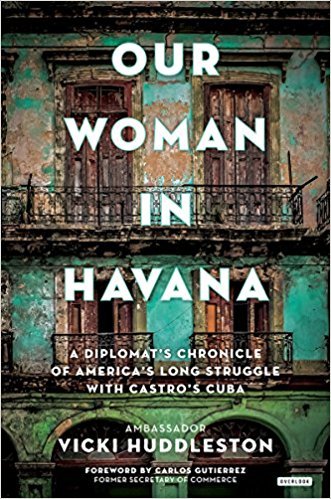
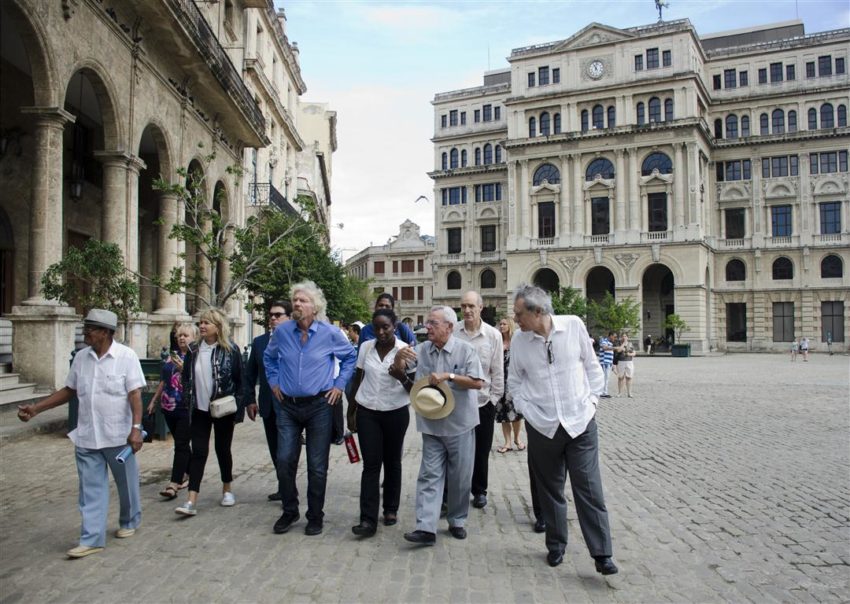
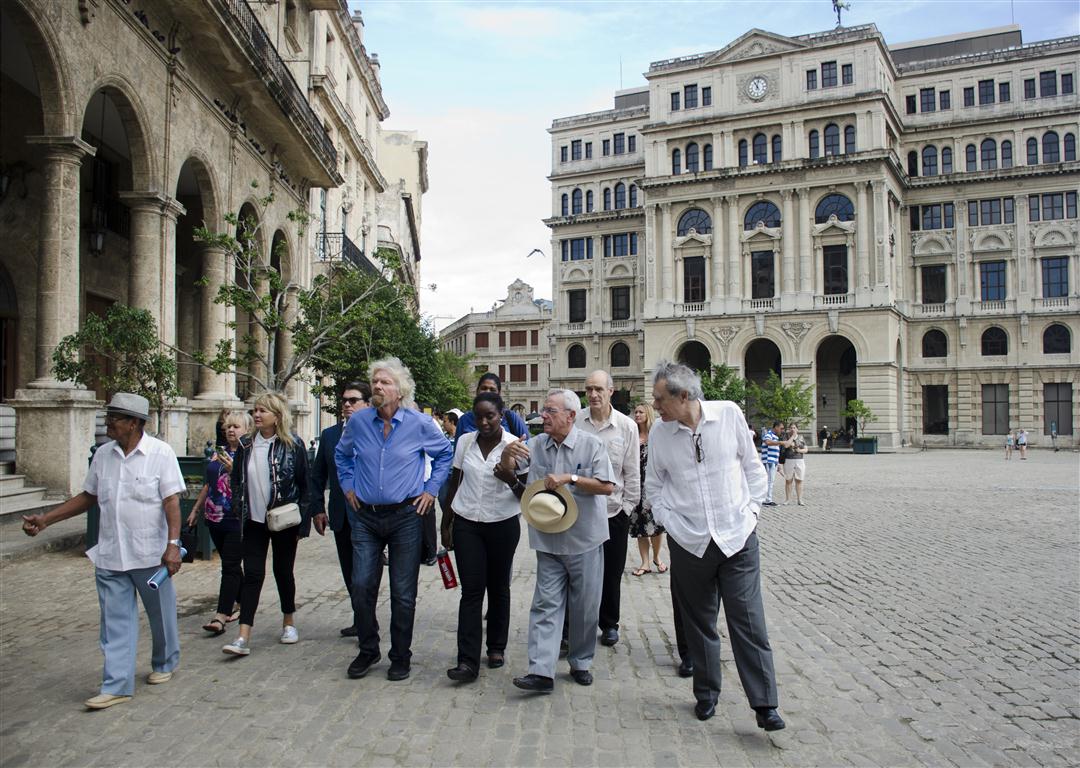
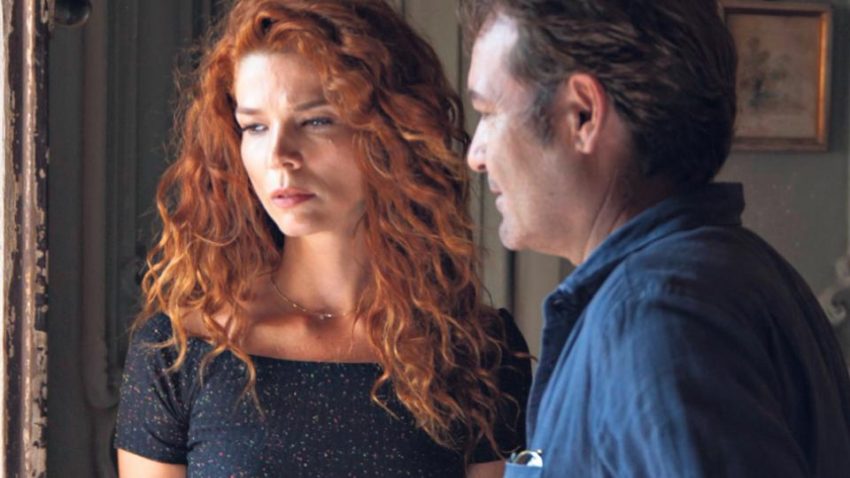
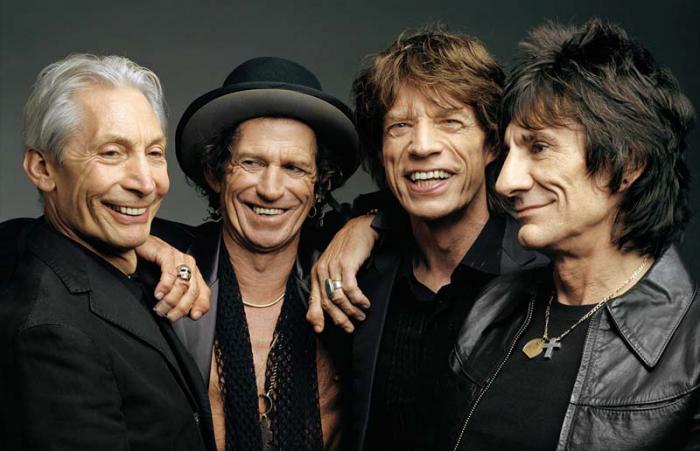
You must be logged in to post a comment.